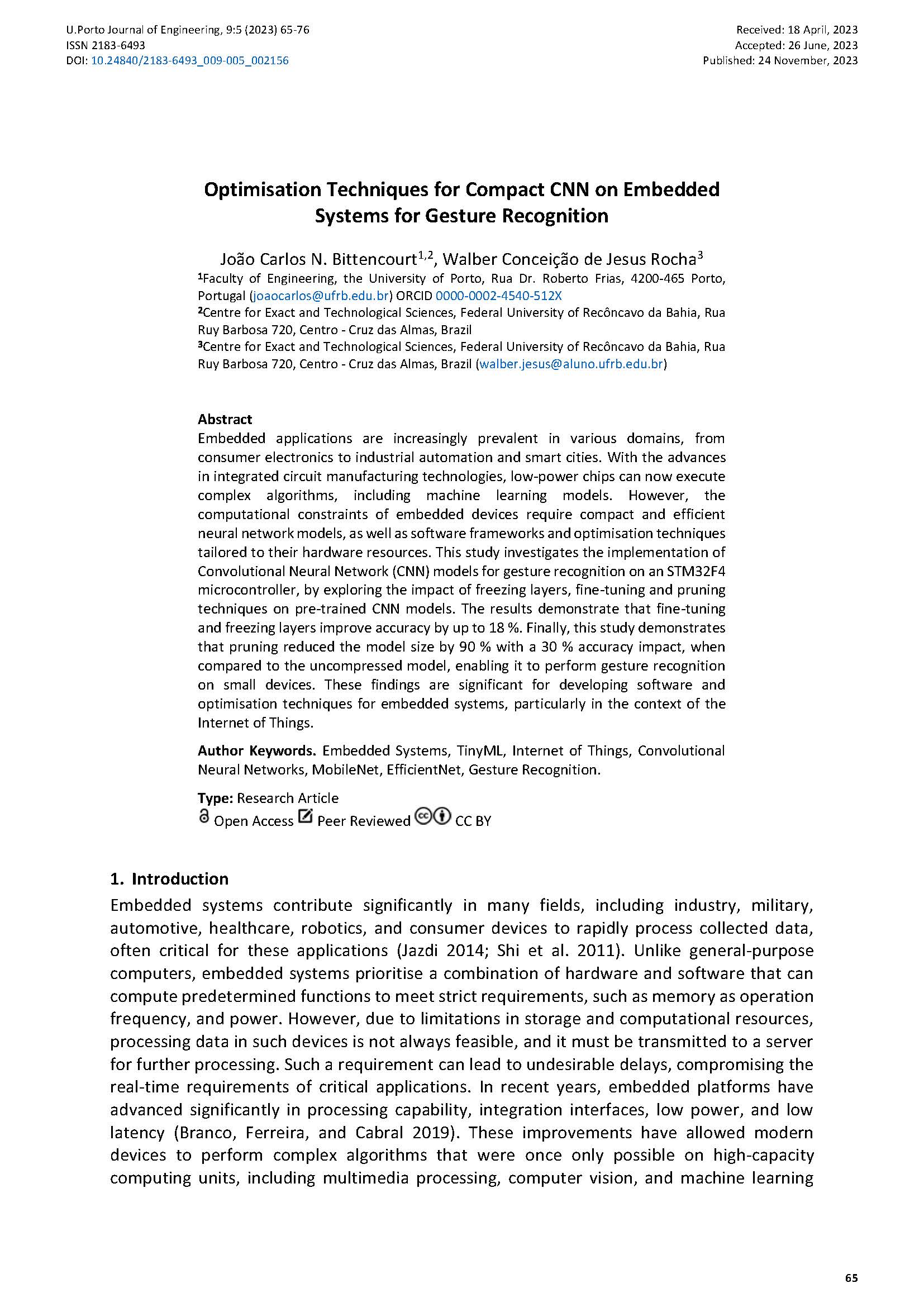Optimisation Techniques for Compact CNN on Embedded Systems for Gesture Recognition
Main Article Content
Abstract
Embedded applications are increasingly prevalent in various domains, from consumer electronics to industrial automation and smart cities. With the advances in integrated circuit manufacturing technologies, low-power chips can now execute complex algorithms, including machine learning models. However, the computational constraints of embedded devices require compact and efficient neural network models, as well as software frameworks and optimisation techniques tailored to their hardware resources. This study investigates the implementation of Convolutional Neural Network (CNN) models for gesture recognition on an STM32F4 microcontroller, by exploring the impact of freezing layers, fine-tuning and pruning techniques on pre-trained CNN models. The results demonstrate that fine-tuning and freezing layers improve accuracy by up to 18%. Additionally, freezing layers by 10% and 20% improved the accuracy. Finally, we demonstrate that pruning reduced the model size by 90%, enabling it to perform gesture recognition on small devices. These findings are significant for developing software and optimisation techniques for embedded systems, particularly in the context of the Internet of Things.
Downloads
Article Details

This work is licensed under a Creative Commons Attribution 4.0 International License.
Authors who publish with this journal agree to the following terms:
- Authors retain copyright and grant the journal right of first publication with the work simultaneously licensed under a Creative Commons Attribution License that allows others to share the work with an acknowledgement of the work's authorship and initial publication in this journal.
- Authors grant the journal the rights to provide the article in all forms and media so the article can be used on the latest technology even after publication and ensure its long-term preservation.
- Authors are able to enter into separate, additional contractual arrangements for the non-exclusive distribution of the journal's published version of the work (e.g., post it to an institutional repository or publish it in a book), with an acknowledgement of its initial publication in this journal.
- Authors are permitted and encouraged to post their work online (e.g., in institutional repositories or on their website) prior to and during the submission process, as it can lead to productive exchanges, as well as earlier and greater citation of published work (See The Effect of Open Access).

